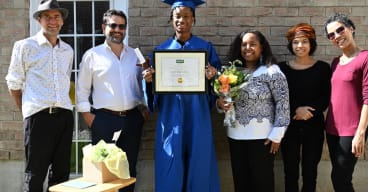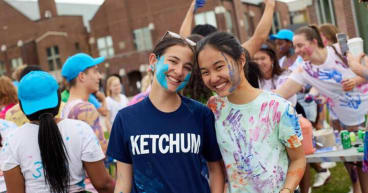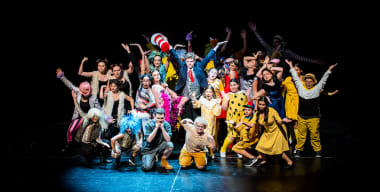One of the most dreaded assignments for students who are struggling with Language Arts is that initial assignment most novice teachers bestow upon their new group of students in September: They ask students to tell them about their summer vacation in one or more paragraph–a highly problematic venture in what many educators believe is a positive foray into a new school year. What if the summer was terrible or marred by some unfortunate happening? This is usually not the case though. Where this statement from the new teacher truly becomes terrifying for many students is the mere act of writing.
False Principles of Writing
There are a significant number of students who have had little preparation in the competencies required to perform any sort of writing. Writing has become an exercise in futility and frustration for many students, especially the male learner. One can view empirical evidence of this trend from the 2011-12 Ontario provincial gender statistics (EQAO, Education Quality and Accountability Office) from Grade 6 students where female students are achieving 83% of the provincial standard while boys are at a lowly 67%. This should not be the case for either gender. Why are these results so unsatisfactory?
There are some time-in-memorial beliefs and correlations about writing that need to be addressed and modified for both teachers and parents. The belief that if a child is a voracious reader, they will automatically be a competent writer holds some sway, but this does not complete the hermeneutic circle for this to be a truism. While the proficient reader will show some acumen for higher levels of applicable grammar, spelling, vocabulary and perhaps even the acquisition or emulation of some the techniques their favourite authors have bequeathed them, they may not be able to fully progress beyond imitation in order to author their own work in the contexts they would wish to wield those skill sets. Reconciling their imagination into these textual connections could prove to be challenging without an inherent process to make that literal and figurative jump.
The notion that a summative (final) assessment will somehow shock a young mind into action and compliance is utterly preposterous. This is a most damaging exercise for all students, but most detrimental for the male student who wishes to progress. Boys will look at a summative mark in two respects: Some may admire the mark they have achieved, remember the amount of effort required to arrive at that point, and then put forth the same exertion next time. Some of their peers who received a failing mark will reconcile it much like they would an athletic score; better luck next time or, oh well, resigning themselves to some future success. The third false principle of writing is the frustrating act of the "re-do". Our children are so socialized by the education system and its pedagogy that they have created a psychological euphoric type reaction in the act of completion, but completion without quality.
Thus, asking a child to redo their writing piece is guaranteed to start a war around the homework table. How many parents have heard, "But mom, I am finished!" The same, but perhaps muted response, occurs in the classroom and leads to reluctance and resentment when it comes to further performing the writing competency in school or on crucial writing assessments. So how do we solve these issues for our children?
Preparing to Write: Identifying the Process and Structure
Teaching writing is not an easy process, especially if one holds some of the aforementioned supposed truisms as some type of dogmatic gospel truth. Undoubtedly, the follower of those supposed principles will have dashed the hopes of future writers on the rocks of inflexibility and lack of vision.
Recognizing writing as a process, rather than a product, is a salient first step. Summative driven writing instruction at best affirms those who have some ability and freezes the potential of those who may not have any natural inclination toward the subject. The good news is that all children have fantastic imaginations and the ability to be creative. Don't scuttle that on the rocks outdated educational practices. Initially provide a broad ranging subject that all children can identify with; for the purposes of this article, the hero. Every child has a hero: real, imagined, in the home, or in their mind. Take the students through a process of brainstorming the entire character, do this collectively! Have the students think about powerful words to describe the character's actions, reasons for doing things (motivations), personality, how that character would act in different situations, and finally their physical appearance. Congratulations, you have just done a character sketch.
It is surprising that when asked to do a proper character sketch, most elementary school students will simply draw you a picture and leave it at that. The curricular component of media awareness may now be addressed. Break up the classroom structure and create groups of five students, give each of them a real emergency situation that actually occurred in the media (obviously filter out any graphic or disturbing images) and just have the students discuss what that hero, given the sum of their persona would do. Students should be talking about books they are reading, so too, should there be a significant amount of "writer talk." Now that the modeling is under way, have the students strike out on their own; independent thought scaffolded by process is powerful.
Reviewing Students' Work and Finding Ways to Present the Story
Once students have repeated the process for their own hero, have them present their results to the class. It is not unusual that the genders will view this phase differently. Keeping in mind these are not absolute truisms, but female writers often think their work is not as good as it really is, and male students often regard their work as pure gold until it is presented in the light of day. Oral presentation of this part of the paradigm is valuable in that it quenches that psychological need for the elementary school child's brain to say, "Ta da! I am finished." It also equates those problematic notions of gender perception of work. Have students place that work in an identifiable folder. Do not be afraid to review basic building block functions of topic sentence construction with supporting sentences and then clearly explain how a narrative chronological structure might appear. Draw a graph if you need to. Technical infusions of skill sets in the process is critical, often educators fail their students in making assumptions about what they should know given their respective grade levels. If you are going to make an assumption, assume they don't know. Most language arts dinosaurs would now assign the summative, STOP!
What about the big picture? Students may have generated wonderful characters, empathized with them, even made the jump to the fourth dimension, where they could become the character and act accordingly to that creation's motivations, but no story exists. Without a narrative, this would be akin to putting a robust character in a theatrical production that might be presented in a food court. Students need to visualize the world behind the story and literally see it mapped out.
Enter the graphic organizer. Beginning a piece of writing is easy, because everyone has some initial idea, but like a cross-country race and those who sprint at its commencement run out of gas. The graphic organizer mimics a process which should be occurring when a student is reading: the compartmentalization of salient information about all aspects of the text into to neat divisions of thought and memory that allows for contemplation and analysis, not just mere surface knowledge. Enthusiastic readers are able to do this in their active consciousness making reading enjoyable as their thought processes can ebb from the past to present and even to future predictions with the benefit of reflection and synthesis. Reluctant readers cannot perform such a task.
Thus, having one's pupils construct compartmentalized graphic organizers as found in comic book panels would have the following twin effects: those students who learn to physically create these intuitive blocks of plot, character, setting, conflict, and mood and match them with a visual image can later do so without the benefit of pen and paper when reading. The inverse effect is that when reading, this component the of the writing process has the hermeneutic cascade effect of breaking down pages of written text into these same compartmentalized graphic/text units within the conscious and subconscious of the reluctant reader. What was part of an instructed process now naturally becomes intuitive for students who practice this process of writing. Guidance regarding assessment must still be a part of the student's schema of tools required by the writing process.
Infusing Data Into Writing
The last part of the process piece is the inclusion of data which informs the student how to achieve the best possible grade. Firstly, exemplars of the final product should be provided so as the student has a summative model to fashion their own work. Secondly, the teacher should provide an easy to read rubric that accounts for all facets of the writing process and the final product. In order to develop students in Language Arts, it is critical that they become assessment aware and realize exactly what components of the process and the product they are being evaluated upon.
It is also imperative that each progressive level of achievement be clearly identified and distinguishable. Teachers should not jump forward to a summative assignment date unless two or three formative attempts at the culminating writing piece have been submitted for comments, editing, adjustment, and peer evaluation–not as stated earlier giving specific grades or percentages. Teachers will often ask me how this looks.
The following is a step-by-step creation of a schema folder:
- Explain the use of the writing folder, where it will be stored, and what the student will find within it.
- Have an exercise where you and the students define, refine, and re-state the topic of the writing process.
- Brainstorm characters, arguments, descriptions with powerful adjectives, verbs, adverbs, and nouns that are hyper-specific to the topic.
- Find a graphic organizer that best suits the process and product of the desired outcome.
- Review the students' graphic organizer and help them make sense of the flow and fluency of the work.
- Review the compartmentalized meanings for each one of their panels in their graphic organizers.
- Always review proper paragraph technique and begin some rough copies, providing only formative comments. Allow for oral presentations to peer groups or elbow partners.
- Review exemplars, expectations, and rubrics. Be sure the students are assessment aware of what they are being evaluated upon.
- Your schema folder is complete, assign the summative. Ultimately, the schema will evolve from a physical construct to an internalized function of the conscious and subconscious.
Changes in Writing Ability and Culture
Writing's greatest adversary is the lack of vision, not necessarily inherent to the writer, but the lack of attention it receives from the teacher. The ability to write is changing. Students are favouring visual intelligence and spatial learning models in order to gain the necessary competencies required in Language Arts and other disciplines. While education, elementary, secondary and post-secondary, is still very much a text driven data enterprise, the ability to visualize and master text in this Information Age is vital for success.
A paradigm shift which might already exist in youth culture needs to traverse the established truisms of current educational practice and perspectives and rectify itself in the manner in which literacy in reading and writing can come to ground with a need to focus on visual representations as a means of mastery through a process, not a unguided summative. Youth culture is driven by entertainment that is highly visual and arguably detrimental to the development of an analytical mind. However, should the process of creation used by modern multi-media be emulated by educators, then given rise by them to a modern process grounded in timed phases, structured by imagination, and physically compartmentalized; a new literary turn might perhaps be on the horizon.
A contemporary literacy, which completes the hermeneutic relationship of the reader and the writer of all abilities, and gives rise to a student who can wield their imagination through genuine empathetic connections from outside and, while this sounds rather existential, from inside and above the text as well. The compartmentalized construction of simple comic book panels holds the key to this revolution in literacy education.









